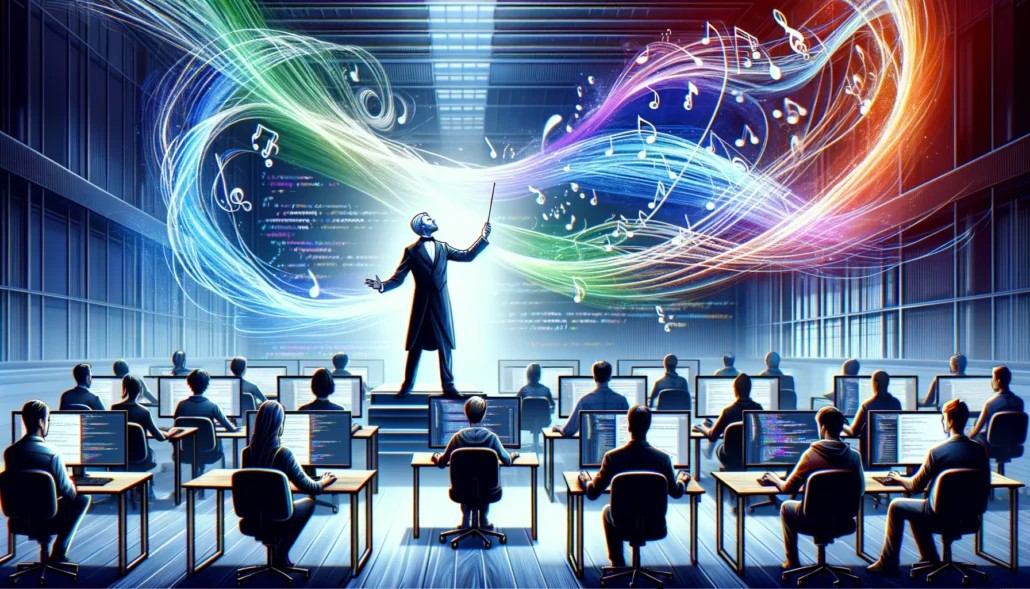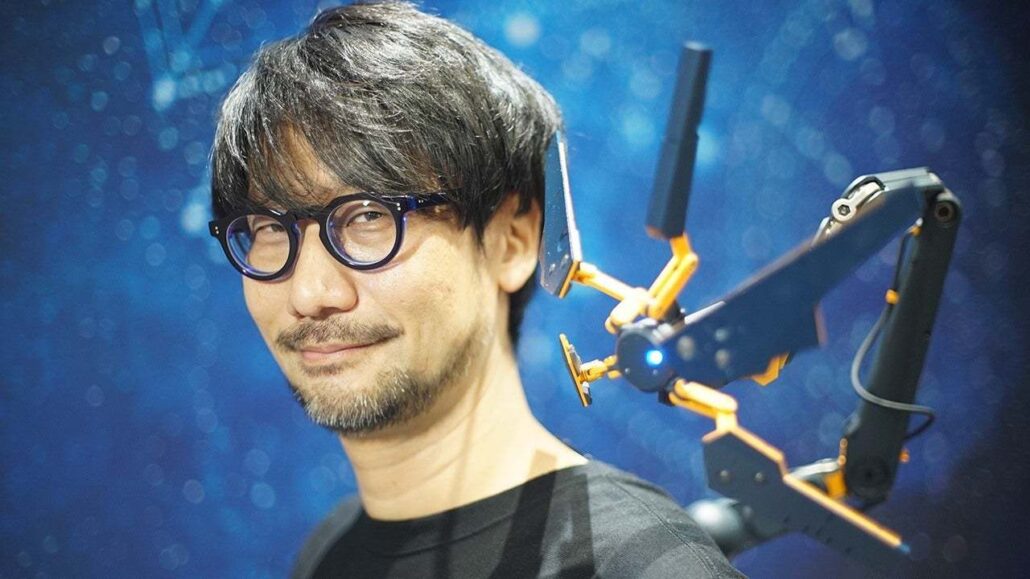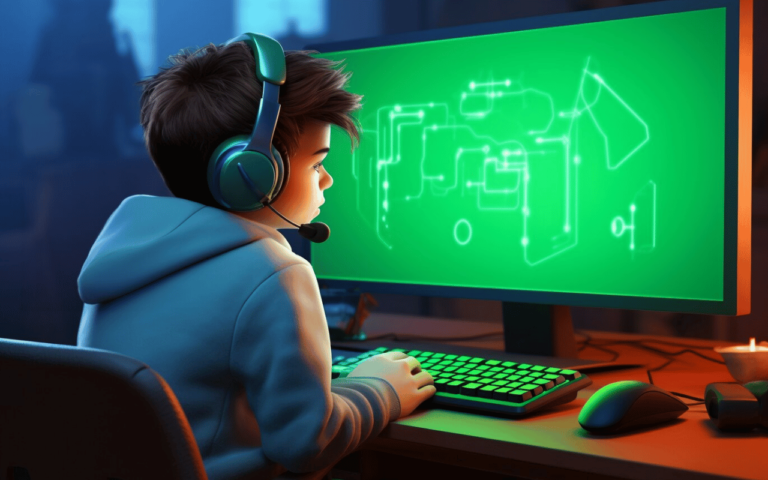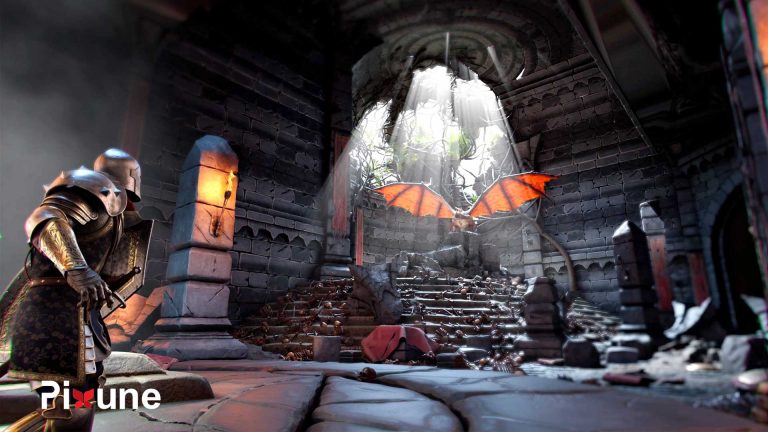A game director oversees the entire game development process, ensuring the project’s vision, scope, and schedule are met; while a creative director focuses specifically on the artistic and creative aspects of the game. At the heart of every iconic gaming experience lies a delicate synergy between two vital forces – the game director’s pragmatic leadership and the creative director’s boundless imagination.
Both roles are crucial, but what truly separates these roles? And how do they harmonize to breathe life into the interactive adventures we cherish? Let’s delve into their distinct duties and collective choreography.
The Game Director: The Maestro Conducting the Symphony

Think of the game director as the maestro taking center stage, baton in hand, conducting an entire orchestra of disciplines into one cohesive performance. Their multifaceted responsibilities are what ensure individual creative talents blend into an engaging, optimized gaming experience. Here, we provide a brief touchdown of the game director’s job as a point of reference to compare with the creative director’s job, but if you’re interested in finding out more about this role, we have a whole post dedicated to exploring the various nuances of a game director’s responsibilities.
A Visionary's Interpreter
While the creative director dreams up the conceptual universe, the game director translates those grand visions into tangible, compelling gameplay experiences. Through meticulous collaboration with writers, artists and designers, they ensure mechanics, narratives, and artistic elements coalesce flawlessly. In a particular RPG project, I vividly recall one project teetering on the brink due to a disjointed creative direction. By facilitating intensive brainstorming sessions with our concept artists and design leads, we gradually honed an intriguing alchemy where storylines organically drove player progression through a beautifully rendered world. Aligning those passionate, creative voices behind one cohesive product vision is often a game director’s greatest challenge.
The Glue that Holds the Team
Just as composers rely on the maestro to harmonize an orchestra’s performance, game directors are the binding force ensuring development teams stay in lockstep execution. Their domains span resource allocation, timeline management, open communication channels and much more. Think back to games you’ve played that felt like meticulously assembled clockwork – chances are a skilled director was the disciplined conductor behind those well-oiled scenes.
The Keystone of Final Accountability
When the fan bases roar its criticisms or sings its praises, all eyes instinctively turn toward the director as the supreme leader absorbing responsibility. They are entrusted with all big-bet decisions, separating them from even powerful co-collaborators like creative directors. Have you ever felt personally impacted by a game’s narrative direction, pleased or disappointed? You were experiencing the director’s grand vision for better or worse.
Balancing Vision and Viability
Its only right and pragmatic for the person who holds the final vision for the game to be the same as the person who makes the budget calls. Throughout the complex process of game development, there will be many times when the creative ambitions of the team are at odds with the very real constraints in reality, mainly with budget and time. Here is where the game director saves the day by prioritizing places where spending money and resources yields the best result. They do this by projecting the resource costs of any decision and weighing it against the impact it will have on the overall quality of the game at the end. This is one of the game director’s hardest jobs, as it means making hard but crucial decisions, and some of those will be unpleasant for the development team and must be handled with care and sensitivity.
Game Director Case Study: Hideo Kojima

Hideo Kojima exemplifies the consummate game director’s steadfast commitment to their creative convictions. He leads Konami’s Metal Gear series, evolving it from scrappy stealth titles into a deeply layered cyberpunk sensory experience. Kojima weathered heavy pushback over the franchise’s idiosyncratic tonal shifts and protracted production sagas. However, his unflinching artistic tenacity forged not just extremely popular titles but an entirely new subgenre synthesizing stealth mechanics with dense Cold War overtures. His stubborn directorial navigation split fandom polarities yet cemented Metal Gear’s lasting legacy as a maverick landmark. For such is the audacious vision-protection innate to the game director’s sacred charge.
The Creative Director: The Artistic Lightning Rod
While directors preside over execution details, creative directors are the ethereal bards breathing soul and identity into experiences. These charismatic visionaries channel intangible elements into emotionally transcendent journeys.
The World-Crafting Wizards

From iconic protagonists to awe-inspiring vistas, creative directors are world crafters adept at materializing whole universes in vibrant detail. Their unique talents inject spirit and authenticity into the pixels dancing across our screens. Ask yourself what games have truly stuck with you long after completion – chances are a creative director’s beautifully imagined world left an indelible imprint.
The Emotional Architects
Why do we, as players, keep returning to certain gaming worlds? More often than not, it’s the emotive storytelling that reels us in. While writers craft surface narratives, creative directors shape the subtler emotional currents and thematic undertones into profound resonating experiences. Think of your favorite narratively rich adventures – wasn’t there a singular cohesive emotional throughline that elevated it from idle entertainment to something deeply memorable?
The North Star for Creative Integrity
Any composed production risks derailment without a steadfast creative authority figure upholding the original artistic principles. Creative directors encircle teams with a prescriptive ambient aura, aligning all creative energies behind one unified artistic truth. When you detect the unwavering singularity of creative voice in legendary games, you’re experiencing the toil and conviction of an exceptional creative lead.
Creative Director Case Study: Jenova Chen

Jenova Chen’s Odyssey Birthing Journey epitomizes the creative director’s supreme role as a spiritual resonance shepherd. The vagabond fantasy began life as a deeply personal indie project exploring Chen’s own weltanschauung. However, the fledgling concept risked becoming distorted once substantial resources were secured for full-scale production.
Through sheer visionary mastery, Chen’s creative compass maintained unflappable alignment throughout the multi-year gauntlet. Every texture, character nuance, audio cue – even the abstract narrative’s obfuscating mystery -uncompromisingly upheld Journey’s cohesive aura of wistful human mindfulness. While polarizing to some, the experience nevertheless achieved widespread mainstream veneration precisely because Chen’s creative iron grip forged an indelible interactive poem of vulnerability. Such fortified curatorial stewardship epitomizes creative direction’s penultimate charge.
A Choreographed Interplay of Orchestration and Inspiration
Clearly game directors and creative directors each command distinct crafts that must harmonize for gaming magic to crystallize. One upholds the structural realities of audience-facing execution, while the other renders the atmospheric intangible essence beneath the entertainment exterior. The greatest development triumphs are borne of this delicate interplay between pragmatic orchestrators and maverick creatives. One cannot exist without the other in perfect counterbalanced choreography.
As you journey through masterfully designed gaming worlds exhibiting that rare structural cohesion elevated by indelible inspirations of genius, remember the vital symbiosis that birthed such wonders. For it is only when the disciplined maestro’s baton meets the eccentric artist’s unbridled muse that the stage transcends into something extraordinary. The methodical embracing of the inspired brought forth wondrous mainstream resonance. This is the cosmic interplay that elevates games from entertainment novelties into artistic resonances, changing lives through the majesty of interactive experience!









